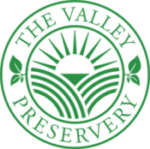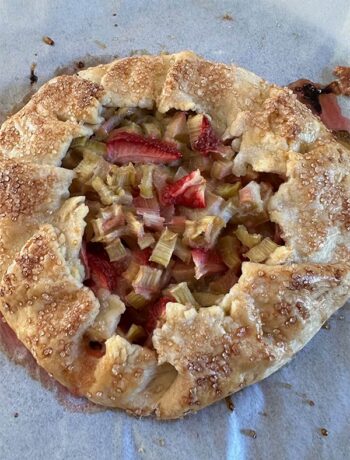The blossoms of chives are bountiful at this time of year. While blossoms can be used to adorn salads, soups, or meats, they can also be used to create a flavourful shelf-stable vinegar to please the pallet the whole year through.
I make many herb vinegars, but I love the chive blossom vinegar for its gorgeous rosy colour and delightful taste. Once it is ready, it will make a super vinaigrette or an addition to a sauce to brighten the taste. Because vinegar is acidic (at least 5%), it is an environment unconducive to most bacteria. It is possible for some yeasts and molds to grow in this environment so if you notice mold or see bubbles indicating yeast fermentation, don’t use it. But overall, herb vinegars are safe. I’ll note that herb infused oils are another story. Oils with herbs and/or garlic create an environment highly conducive to the worst bacterium clostridium botulinum (you got it – the botulism bacteria). It is possible to safely produce herb-garlic infused oils by acidifying the herbs and garlic, but please refer to the National Centre for Home Food Preservation for specific instructions about how to do it safely.
Making chive blossom vinegar, like all herb vinegars, is a two-step process. First, the sanitized herbs are placed in a sterilized Mason jar (warm) and hot vinegar is poured over. The mixture is left to steep for 2 weeks although you can decide to use a shorter time if you wish. At the end of the steeping period, the blossoms or herbs are strained out. I use two steps: First, strain using a sieve reserving the liquid. Second, pour the liquid through a dampened coffee filter to remove small sediment. The second phase of the process involves sterilizing the glass jars you will use to store the vinegar and heating the herb-infused vinegar to just below boiling point. Then de-cant the vinegar into the warm jars or bottles leaving a ½ inch headspace. Cool, put on lids, caps or corks, label and store in a cool, preferably dark location.
The particulars:
For chive blossom vinegar I use white wine vinegar and about ½ cup of blossoms for 500 ml. It’s really a matter of how many blossoms I can get my hands on.
Sanitizing solution: Blossoms or herbs should be knocked gently to remove insects or debris. It is recommended that they be quickly submerged in a solution of ½ tsp household bleach to 3 cups water, then thoroughly rinsed and patted dry.
Jar sterilization: Use the dishwasher cycle if you have it or submerge the jars or bottles in boiling water for 10 minutes. Invert on a towel and fill with the hot vinegar while warm. If you are using bottles with corks, use only new corks and sanitize them by dipping them in boiling water 3 or 4 times.
Getting creative: As the herbs begin to produce, it’s possible to create various infused vinegars. Strong herbs blend well with apple cider vinegar or even white vinegar. Milder herbs like chives, basil, tarragon blend well with white wine or champagne vinegars. Fruits also make super vinegars. You can experiment to determine what you enjoy.
The chive blossoms are here and ready to be used as culinary accents or to be infused into vinegar for a gloriously tinted vinegar with a gentle chive background ready to elevate your vinaigrette to new heights!
preservingwithmartha@gmail.com





No Comments